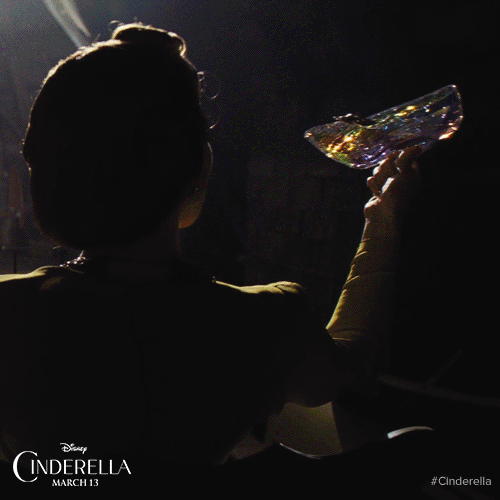Why the Story of Cinderella Endures and Resonates
A Smithsonian folklorist follows the ancient tale with a particularly American twist
:focal(811x132:812x133)/https://tf-cmsv2-smithsonianmag-media.s3.amazonaws.com/filer/63/b1/63b1b9fe-eb02-4734-a5c9-5d6ede484104/1rdosruweb.jpg)
On Friday the 13th, as Walt Disney Pictures releases its third Cinderella, one has to wonder why yet another?
There is no scarcity of Cinderella tales—folklorists have identified more than 700 different variants around the world. How to explain the popularity of this humble heroine who marries her handsome prince in spite of her treacherous stepsisters and abusive stepmother?
For Disney, the story has paid off. With three Academy Award nominations and a place in the American Film Institute's top-ten animation list, Disney’s first Cinderella venture, a 1950 feature-length animated film, was a box-office success. The studio's second was the award-winning 1997 television adaptation of the Rodgers and Hammerstein’s Julie Andrews musical that aired on live television in 1957. Sixty million viewers tuned in and the show won acclaim for its diverse cast: Brandy Norwood as Cinderella, Whitney Houston as the fairy godmother, and Whoopi Goldberg as Queen Constantina.
More recently Disney distilled yet another crowd-pleasing Cinderella, this time with Anna Kendrick in the role, as part of a mashup of fairytales in the adaptation of Stephen Sondheim's Tony-award winning musical Into the Woods. And now Disney presents a new live-action spectacle, nearly two hours in length and directed by Kenneth Branagh, best known for directing cinematic versions of Shakespeare’s plays, including Henry V (1989), Hamlet (1996) and the wildly popular film Thor (2011), the Marvel Comics superhero.
/https://tf-cmsv2-smithsonianmag-media.s3.amazonaws.com/filer/20/a7/20a7da75-bb05-4355-a273-70980b97eeee/cinderella1web.jpg)
Dozens of other filmmakers have borrowed elements of the tale, starting as early as 1899 with a French version directed by the pioneering filmmaker Georges Méliès. And perhaps the best known is the 1990 Pretty Woman, a retelling of both Cinderella and George Bernard Shaw's Pygmalion, starring Julia Roberts as Vivian, who is magically transformed from rags to riches.
The appeal of Cinderella extends not only to filmmakers, but also to folklorists and early collectors of folktales, such as the Brothers Grimm—Jacob and Wilhelm—who included the story of Aschenputtel (Ash Girl) in their well-known German collection, Kinder- und Hausmärchen (Children’s and Household Tales), first published in 1812. Charles Perrault included a similar tale even earlier—under the title of Cendrillon (Cinderella)—in his French collection of tales, Histoires ou Contes du Temps Passé, avec des Moralités: Contes de Ma Mere L’Oye (Stories or Tales from Time Past, with Morals; Tales of Mother Goose), first published in 1697. Going back even further, folklorists have traced the story to 9th-century China, in which Yeh-Shen overcomes an evil stepmother, thanks to a golden slipper that transforms her rags to beautiful clothes and enables her to marry a wealthy king.

Variation is one of the defining characteristics of folklore, especially folktales, because a story may change slightly with each retelling. However, some folkloric elements remain relatively constant, such as the standard opening of a folktale—whether it be once upon a time (English), es war einmal (German), il était une fois (French), había una vez (Spanish), c’era una volta (Italian), pewnego razu (Polish), имало едно време (Bulgarian), or noóng unang panahón (Tagalog)—all of which set the story in some vaguely distant past time.
But Cinderella seems to resonate particularly well in the United States. Here’s why:
The tale’s appeal is surely its upbeat ending. Cinderella and her prince—live happily forever after, a rags-to-riches story. Even if Cinderella herself is of noble origin (as in some of the earliest versions), she is able to rise out of ashes and cinders to achieve a position of wealth and stature. This is the same basic story that fuels what some call “the American dream”—a belief that you too will rise to the top because you have the requisite pluck and need just a little luck—such as a pumpkin coach or a prince who finds you at long last with your glass slipper in his benevolent hand. This belief is reinforced by actual rags-to-riches cases, from Benjamin Franklin and Abraham Lincoln to Barack Obama, Oprah Winfrey and . . . yes, even Walt Disney himself.
/https://tf-cmsv2-smithsonianmag-media.s3.amazonaws.com/filer/12/55/125506a3-3e2e-4600-a1d3-53f82c178f97/cinderella3web.jpg)
Similarly, the story of Cinderella tells us that virtue is rewarded and evil is punished. You rightly deserve your prince (or princess), just as the United States deserves its preeminence, or so most Americans believe. Conversely, the evil stepsisters who cut off parts of their feet in vain attempts to cheat the slipper test deserve to be sternly and righteously punished for their treacherous behavior; in some versions of the story, birds peck out the stepsisters’ eyes to render them blind as even sterner punishment. One corollary of this theme holds that the line between good and evil is clearly demarcated with little ambiguity between the two.
Not only is virtue rewarded, so too is action. Cinderella is not a passive wimp who simply wishes upon a star. She makes things happen through her fortitude, perseverance, and wise decisions—albeit with some help from a magical fairy godmother. In similar fashion, Americans regard themselves as can-do people who take the bull by the horns, not letting the grass grow under their boots on the ground. By the way, all of those proverbial expressions are wonderful illustrations of folklore at work in the contemporary world.
If only real life were so predictable; but that’s precisely the appeal of Cinderella and her ilk. Once upon a time . . .

/https://tf-cmsv2-smithsonianmag-media.s3.amazonaws.com/accounts/headshot/James_Deutsch.jpg)


/https://tf-cmsv2-smithsonianmag-media.s3.amazonaws.com/accounts/headshot/James_Deutsch.jpg)